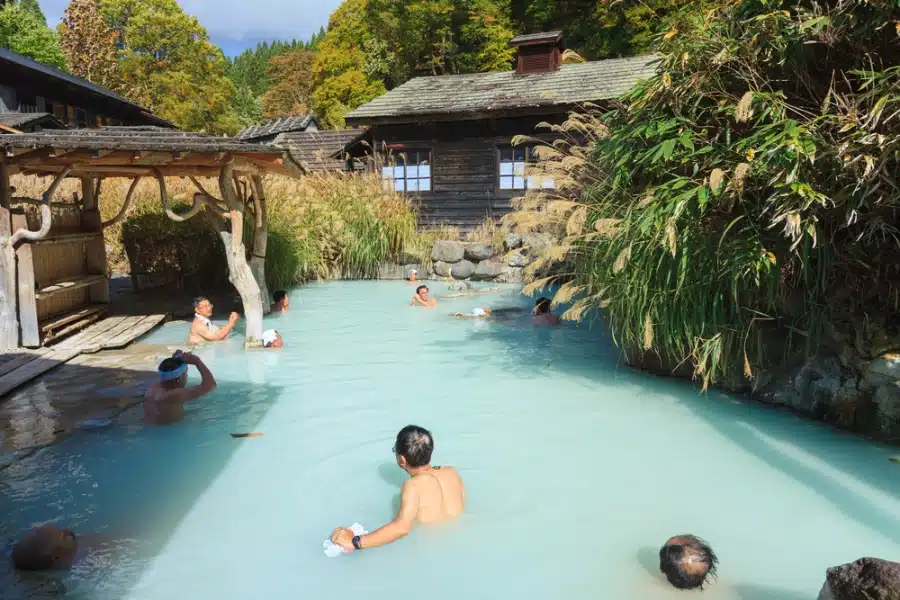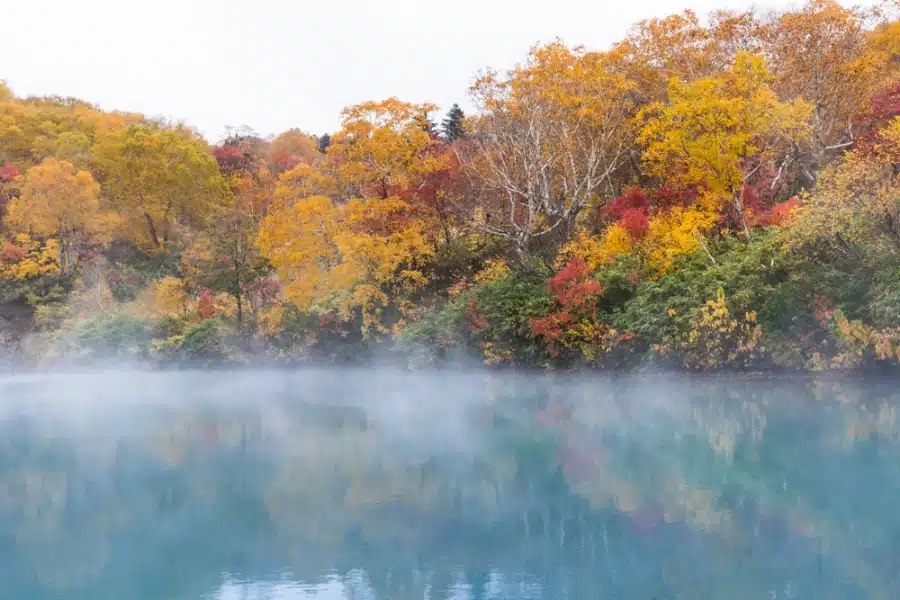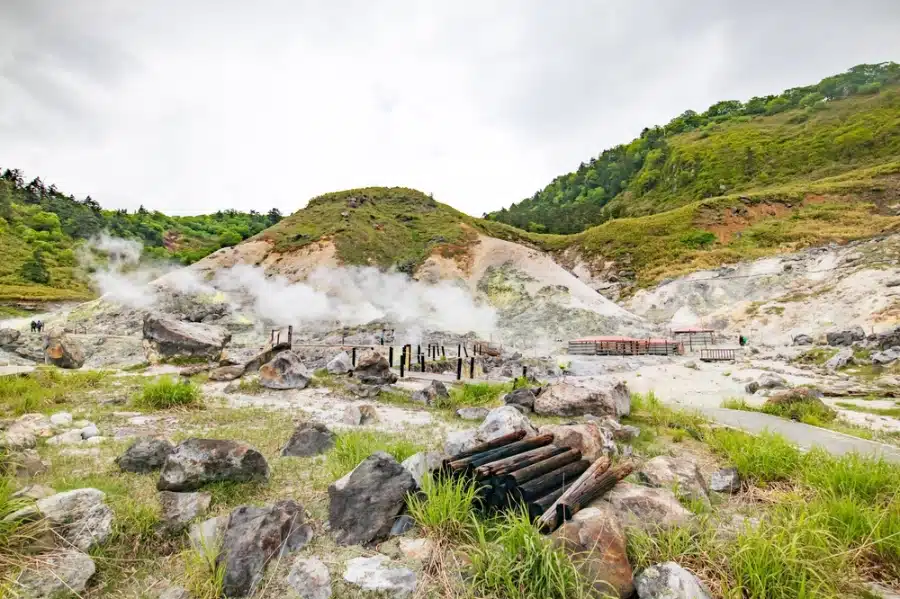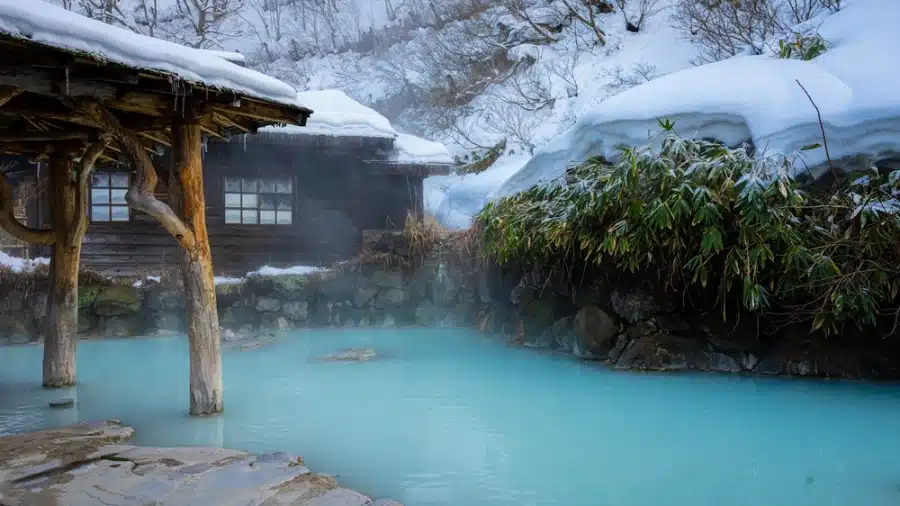Japan is renowned for its hot springs, or onsen, which have been part of Japanese culture for centuries, initially associated with religious purification practices by Buddhist monks.
Over time, they became integral to samurai traditions and later evolved into popular communal spaces during the Edo period. Since then, an entire code of onsen etiquette has developed to respectfully share the hot springs with others.
The onsen experience extends beyond relaxation; it is deeply tied to wellness rituals like toji (therapeutic soaking) and social interactions without societal hierarchies. Many onsen are located near Shinto shrines or Buddhist temples, enhancing their spiritual significance.
While many famous onsen attract tourists, there are numerous hidden gems that offer unique settings, historical significance, and an authentic cultural experience. We’ve decided to dive into some lesser-known hot springs to explore while traveling in Japan that stand out for their distinct characteristics.
Tsurunoyu Onsen
Tsurunoyu Onsen is one of the oldest hot spring resorts in the Nyuto Onsenkyo area, with a history dating back to the early 1600s. It gained prominence when Akita’s feudal lord visited for its healing properties. The name comes from a local legend where a hunter saw a crane (tsuru) healing its wounds in the spring.

The onsen features four distinct baths, each with unique water compositions. The signature bath is an open-air mixed-gender bath with milky white waters, rich in sulfur, known for its skin benefits. There are also gender-specific indoor baths and a private family bath available.
Nestled deep in the forest alongside Sendachi-gawa, a mountain stream, Tsurunoyu offers a secluded and tranquil environment. The traditional thatched-roof buildings enhance its rustic appeal, making it feel like a step back in time.
Sukayu Onsen
Sukayu Onsen, located in Aomori Prefecture, has a rich history dating back to 1684. It was originally named “Shikanoyu” or “deer bath” after a hunter discovered a wounded deer healing in its waters.

In 1954, it was designated as Japan’s first National Health Onsen Resort due to its exceptional qualities and abundant water flow. The onsen has a single ryokan (Japanese inn) where you can experience traditional accommodation.
The most famous feature of Sukayu Onsen is the “Hiba Sennin Buro,” a massive communal bath made entirely of Japanese cypress (hiba). This bath is large enough to accommodate up to 150 people and is mixed-gender, though there are designated hours for women-only bathing.
Tamagawa Onsen
The hot springs of Tamagawa Onsen were discovered by a local matagi (hunter) in 1680. Initially, the area was primarily used as a sulfur mine due to its rich mineral deposits, before the first resort lodgings were erected in 1885.
Located in the mountains of Towada-Hachimantai National Park in Akita Prefecture, it’s famous for having Japan’s most acidic hot spring waters, with a pH level close to 1. It also boasts Japan’s single most productive hot spring source, releasing about 9,000 liters of 98-degree Celsius water every minute.
The area is also home to a rare radioactive stone called hokutolite, which is believed to have health benefits such as aiding in the prevention of cancer. Visitors often lie on these stones to absorb their purported healing properties.
The onsen is set in a volcanically active valley with walking paths that allow visitors to explore the natural hot spring sources and sulfur vents. The area also serves as a trailhead for hiking routes over Mount Yakeyama to Goshogake Onsen.
Shirahone Onsen
Shirahone Onsen, located in the Japanese Alps northwest of Tokyo, is famous for its creamy white hot spring water, rich in calcium and magnesium. The water turns milky white upon contact with oxygen due to the minerals dissolved in it. This characteristic gives the onsen its name, “Shirahone,” meaning “white bone” in Japanese.
The hot springs have been used since the Kamakura period (1185–1333), with a history spanning over 600 years. It became popular during the Edo period as a retreat for farmers and travelers seeking relief from fatigue and ailments.

The onsen offers both indoor and outdoor baths. Awanoyu is one of the most iconic baths in Shirahone, known for its large mixed-gender outdoor bathing space with blueish milky waters.
Takamine Onsen
Takamine Onsen is a secluded hot spring resort located in the Takamine Highland of Nagano Prefecture. Situated at an altitude of 2,000 meters, it provides stunning vistas of the surrounding Japan Alps and overlooks the Takamine Ravine.
The hot spring source of Takamine Onsen was first discovered over 100 years ago on the hillside at an altitude of 1,700 meters. The original lodge was built near this source but later moved to its current location after a fire in 1978. This relocation made it one of the highest altitude hot springs in Japan.
The onsen features both indoor and outdoor baths. The outdoor bath, known as “Woonjoe-no-Notenburo,” is as notable for its small size (only accommodating up to four guests) as it is for the spectacular views.

